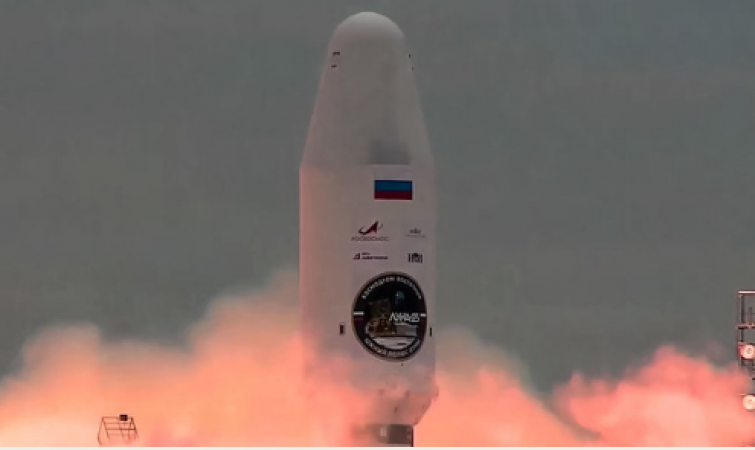
Estonia: Russia has encountered an unexpected setback in its lunar ambitions as the Luna-25 spacecraft, en route to the moon, faced an "abnormal situation" during its attempt to enter a pre-landing orbit.
The incident occurred earlier this month, prompting Russia's space agency, Roscosmos, to launch an analysis of the situation. The exact nature of the issue remains unspecified.
Roscosmos conveyed the incident through a Telegram post, stating that during the operation, an abnormal situation hindered the spacecraft's maneuver to align with the desired parameters.
Also Read: Bajaj Revs Up Indian Motorcycle Scene with Pulsar N160 Launch Starting at Rs. 1.38 Lakh
Despite this challenge, Roscosmos has not definitively stated whether this issue will prevent the Luna-25 from successfully landing.
Scheduled to touch down at the moon's south pole on Monday, Luna-25's primary goal is to explore the scientifically intriguing region. This location is of particular interest due to the belief that its shadowed polar craters might contain frozen water, which could be converted into essential resources for future space exploration, such as air and rocket fuel.
In a significant development, the Luna-25 has already begun producing preliminary results. Although Roscosmos is still analyzing the information, they reported that the initial data includes insights into the chemical composition of lunar soil and has registered the impact of a "micrometeorite."
Also Read: Exclusive Unveiling: Land Rover Introduces the 2024 Range Rover SV Carmel Edition
Images shared by Roscosmos captured the Zeeman crater, the third-largest crater in the moon's southern hemisphere. Measuring 190 kilometers (118 miles) in diameter and eight kilometers (five miles) in depth, the crater's images were taken from the spacecraft.
This venture marks Russia's first lunar mission since 1976, when it was part of the Soviet Union. The Vostochny spaceport in the Far East of Russia was the launch site for the Luna-25 on August 10.
This achievement is an integral part of Russian President Vladimir Putin's vision to position Russia as a space superpower and shift launch activities from Kazakhstan's Baikonur Cosmodrome.
With only the Soviet Union, the United States, and China having achieved successful moon landings, both Russia and India are striving to become the first to reach the moon's south pole.
While Russia's pursuit aims to showcase its lunar delivery capabilities and ensure access to the moon's surface, the imposition of sanctions following the Ukraine conflict has hampered its access to Western technology, impacting its space program.
Initially intended to carry a moon rover, the Luna-25 underwent modifications to enhance its reliability by reducing weight. This decision was influenced by the fact that foreign electronics are lighter compared to their domestic counterparts.
For Roscosmos, the primary objective remains landing on the moon and reclaiming Soviet expertise while adapting to modern challenges.
Also Read: Mahindra Scorpio and Thar: A Sales Surge that Defies Expectations
The incident echoes a similar Indian endeavor in 2019, when an attempt to land at the moon's south pole ended in failure. As the Luna-25's arrival window overlaps with an Indian craft launched on July 14, the race to the lunar south pole takes on added significance.
The outcome of the Luna-25's journey will not only impact Russia's aspirations but also contribute to the ongoing narrative of exploration and discovery beyond Earth's boundaries.